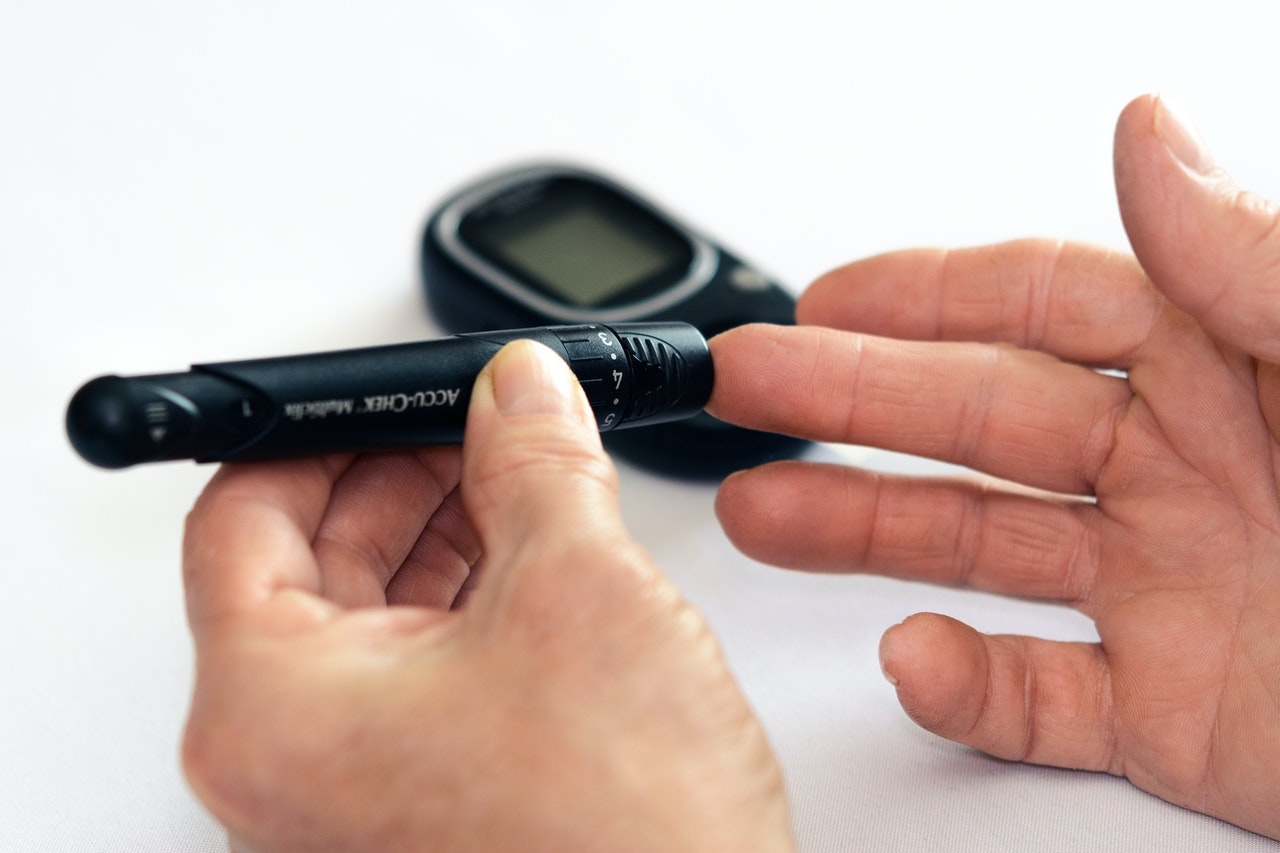
Diabetes is a condition that impedes the body’s capacity to process blood glucose, also known as blood sugar.
Without ongoing, careful management, diabetes can lead to a buildup of sugars in the blood, which can increase the risk of dangerous complications, including stroke and heart disease.
Different kinds of diabetes can occur, and managing the condition depends on the type. Not all forms of diabetes stem from a person being overweight or leading an inactive lifestyle. In fact, some are present from childhood.
Types
Three major diabetes types can develop: Type 1, type 2, and gestational diabetes.
Type I diabetes: Otherwise called juvenile diabetes, this sort happens when the body neglects to produce insulin. Individuals with type I diabetes are insulin-subordinate, which implies they should take artificial insulin day by day to remain alive.
Type 2 diabetes: Type 2 diabetes influences the manner in which the body utilizes insulin. While the body despite everything makes insulin, dissimilar to in type I, the cells in the body don’t react to it as viably as they once did. This is the most well-known sort of diabetes, as indicated by the National Institute of Diabetes and Digestive and Kidney Diseases, and it has solid connections with obesity.
Gestational diabetes: This type happens in ladies during pregnancy when the body can turn out to be less sensitive to insulin. Gestational diabetes does not occur in all women and usually resolves after giving birth.
Less regular sorts of diabetes incorporate monogenic diabetes and cystic fibrosis-related diabetes.
Prediabetes
Doctors refer to some people as having prediabetes or borderline diabetes when blood sugar is usually in the range of 100 to 125 milligrams per deciliter (mg/dL).
Normal blood sugar levels sit between 70 and 99 mg/dL, whereas a person with diabetes will have a fasting blood sugar higher than 126 mg/dL.
The prediabetes level means that blood glucose is higher than usual but not so high as to constitute diabetes.
People with prediabetes are, however, at risk of developing type 2 diabetes, although they do not usually experience the symptoms of full diabetes.
The risk factors for prediabetes and type 2 diabetes are similar. They include:
- being overweight
- a family history of diabetes
- having a high-density lipoprotein (HDL) cholesterol level lower than 40 mg/dL or 50 mg/dL
- a history of high blood pressure
- having gestational diabetes or giving birth to a child with a birth weight of more than 9 pounds
- a history of polycystic ovary syndrome (PCOS)
- being of African-American, Native American, Latin American, or Asian-Pacific Islander descent
- being more than 45 years of age
- having a sedentary lifestyle
If a doctor identifies that a person has prediabetes, they will recommend that the individual makes healthful changes that can ideally stop the progression to type 2 diabetes. Losing weight and having a more healthful diet can often help prevent the disease.
How insulin problems develop
Doctors do not know the exact causes of type I diabetes. Type 2 diabetes, also known as insulin resistance, has clearer causes.
Insulin allows the glucose from a person’s food to access the cells in their body to supply energy. Insulin resistance is usually a result of the following cycle:
In the case of type 2 diabetes, insulin resistance takes place gradually. This is why doctors often recommend making lifestyle changes in an attempt to slow or reverse this cycle.
Learn more about the function of insulin by clicking here.
Exercise and diet tips
If a doctor diagnoses a person with type 2 diabetes, they will often recommend making lifestyle changes to support weight loss and overall health.
A doctor may refer a person with diabetes or prediabetes to a nutritionist. A specialist can help a person with diabetes lead an active, balanced lifestyle and manage the condition.
Steps a person can take to embrace a lifestyle with diabetes include:
- Eating a diet high in fresh, nutritious foods, including whole grains, fruits, vegetables, lean proteins, low-fat dairy, and healthy fat sources, such as nuts.
- Avoiding high-sugar foods that provide empty calories, or calories that do not have other nutritional benefits, such as sweetened sodas, fried foods, and high-sugar desserts.
- Refraining from drinking excessive amounts of alcohol or keeping intake to less than one drink a day for women or two drinks a day for men.
- Engaging in at least 30 minutes exercise a day on at least 5 days of the week, such as of walking, aerobics, riding a bike, or swimming.
- Recognizing signs of low blood sugar when exercising, including dizziness, confusion, weakness, and profuse sweating.
People can also take steps to reduce their body mass index (BMI), which can help some people with type 2 diabetes manage the condition without medication.
Slow, steady weight loss goals are more likely to help a person retain long-term benefits.
Using insulin
People with type I diabetes and some people with type 2 diabetes may need to inject or inhale insulin to keep their blood sugar levels from becoming too high.
Various types of insulin are available, and most are grouped by how long their effect lasts. There are rapid, regular, intermediate, and long-acting insulins.
Some people will use a long-acting insulin injection to maintain consistently low blood sugar levels. Some people may use short-acting insulin or a combination of insulin types. Whatever the type, a person will usually check their blood glucose levels using a fingerstick.
This method of checking blood sugar levels involves using a special, portable machine called a glucometer. A person with type I diabetes will then use the reading of their blood sugar level to determine how much insulin they need.
Self-monitoring is the only way a person can find out their blood sugar levels. Assuming the level from any physical symptoms that occur may be dangerous unless a person suspects extremely low glucose and thinks they need a rapid dose of glucose.
The discovery of insulin was fascinating and controversial.
How much is too much?
Insulin helps people with diabetes live an active lifestyle. However, it can lead to serious side effects, especially if a person administers too much.
Excessive insulin can cause hypoglycemia, or extremely low blood sugar, and lead to nausea, sweating, and shaking.
It is essential that people measure insulin carefully and eat a consistent diet that balances blood sugar levels as much as possible.
Other medications
In addition to insulin, other types of medication are available that can help a person to manage their condition.
Metformin
For type 2 diabetes, a doctor may prescribe metformin in pill or liquid form.
It contributes to:
- lowering blood sugar
- making insulin more effective
It can also help in weight loss. Having a healthy weight can reduce the impact of diabetes.
As well as diabetes, a person may also have other health risks, and they may need medication to control these. A doctor will advise the individual about their needs.
SGLT2 inhibitors and GLP-1 receptor agonists
In 2018, new guidelines also recommended prescribing additional drugs for people with:
- atherosclerotic cardiovascular disease
- chronic kidney disease
These are sodium-glucose cotransporter 2 (SGLT2) inhibitors or glucagon-like peptide-1 (GLP-1) receptor agonists.
For those with atherosclerotic cardiovascular disease and a high risk of heart failure, the guidelines advise doctors to prescribe an SGLT2 inhibitor.
GLP-1 receptor agonists work by increasing the amount of insulin the body produces and decreasing the amount of glucose that enters the bloodstream. It is an injectable drug. People may use it with metformin or alone. Side effects include gastrointestinal problems, such as nausea and a loss of appetite.
SLGT2 inhibitors are a new type of drug for lowering blood glucose levels. They work separately from insulin, and they may be useful for people who are not ready to start using insulin. People can take it by mouth. Side effects include a higher risk of urinary and genital infections and ketoacidosis.
Self-monitoring tips
Self-monitoring blood sugar levels is vital for effective diabetes management, helping to regulate meal scheduling, physical activity, and when to take medication, including insulin.
While self-monitoring blood glucose (SMBG) machines vary, they will generally include a meter and test strip for generating readings and a lancing device to prick the skin for obtaining a small quantity of blood.
Refer to the specific instructions of a meter in every case, as machines will differ. However, the following precautions and steps will apply to many of the machines on the market:
- Make sure both hands are clean and dry before touching the test strips or meter
- Do not use a test strip more than once and keep them in their original canister to avoid any external moisture changing the result.
- Keep canisters closed after testing.
- Always check the expiration date.
- Older meters might require coding prior to use. Check to see if the machine currently in use needs this.
- Store the meter and strips in a dry, cool area.
- Take the meter and strips into consultations, so that a primary care physician or specialist can check their effectiveness.
A person who is self-monitoring diabetes uses a device called a lancet to prick the skin. While the idea of drawing blood might cause distress for some people, the lancing of the finger to obtain a blood sample should be a gentle, simple procedure.
Take the following precautions:
- Clean the area from which the sample will come with soapy, warm water to avoid food residue entering the device and distorting the reading.
- Choose a small, thin lancet for maximum comfort.
- The lancet should have depth settings that control the depth of the prick. Adjust this for comfort.
- Many meters require only a teardrop-sized sample of blood.
- Take blood from the side of the finger, as this causes less pain. Using the middle finger, ring finger, and little finger may be more comfortable
- While some meters allow samples from other test sites, such as the thighs and upper arms, the fingertips or outer palms produce more accurate results.
- Tease blood to the surface in a “milking” motion rather than placing pressure at the lancing site.
- Dispose of lances in line with local regulations for getting rid of sharp objects.
While remembering to self-monitor involves lifestyle adjustments, it need not be an uncomfortable process.
Diabetes is a serious, chronic condition. According to the American Diabetes Association (ADA), the condition is the seventh leading cause of death in the U.S.
While diabetes itself is manageable, its complications can severely impact on daily living, and some can be fatal if not treated immediately.
Complications of diabetes include:
- dental and gum diseases
- eye problems and sight loss
- foot problems, including numbness, leading to ulcers and untreated injuries and cuts
- heart disease
- nerve damage, such as diabetic neuropathy
- stroke
- kidney disease
In the case of kidney disease, this complication can lead to kidney failure, water retention when the body does not dispose of water correctly, and a person experiencing difficulties with bladder control.
Regularly monitoring blood glucose levels and moderating glucose intake can help people prevent the more damaging complications of type 2 diabetes.
For those with types 1 diabetes, taking insulin is the only way to moderate and control the effects of the condition.
** These articles do not imply an endorsement of Doctor Alert by the author or their institution, nor do they imply an endorsement of the institution or author by Doctor Alert.
Some of the content may be adapted from other sources, which will be clearly identified within the article.

